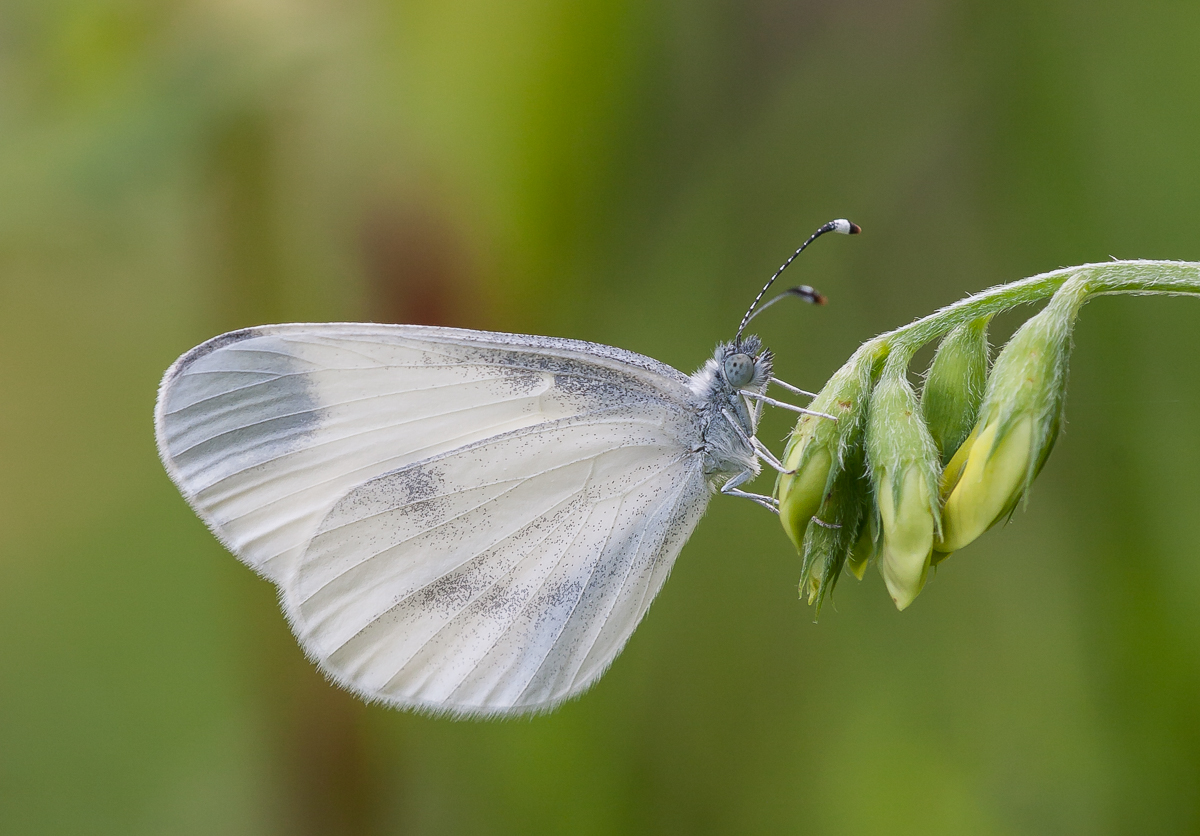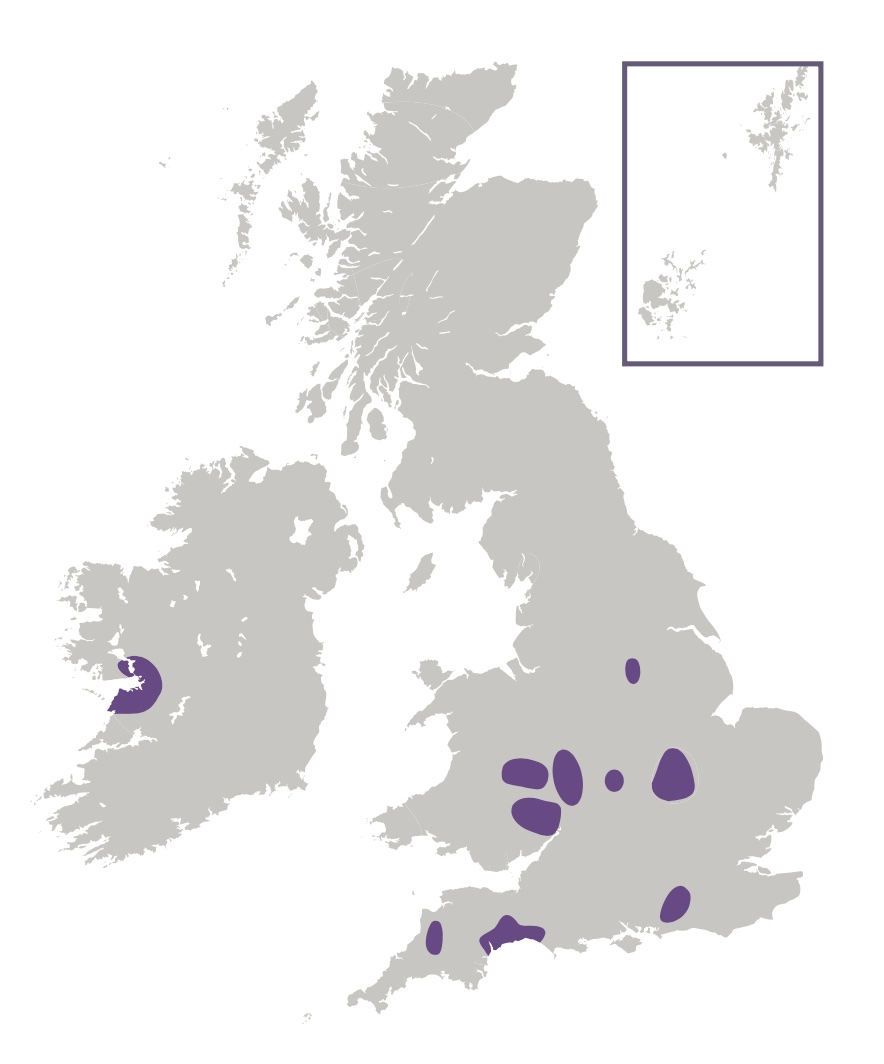
Photo © Peter Eeles
The Wood White is one of our daintiest butterflies with one of the slowest and delicate flights of all the British butterflies. When at rest, the rounded tips of the forewings provide one of the main distinguishing features between this butterfly and other "whites". Adults always rest with their wings closed. In flight, the male can be distinguished from the female by a black spot at the tip of the forewings that is greatly reduced in the female. This butterfly lives discrete colonies and was only recently separated from the visibly-identical Cryptic Wood White. This local species can be found in central and southern England and also in Ireland on the limestone pavements of Clare and South-east Galway. This species is absent from Scotland, the Isle of Man and the Channel Islands.
Males are the more active of the two sexes and can be found patrolling for females, rarely stopping to rest or feed, especially in sunny weather. On dull days, the butterfly will rest on the underside of a leaf with its wings closed and, when disturbed, the butterfly will fly into thick undergrowth.
The courtship of this butterfly is an amazing spectacle. Male and female face each other with wings closed and intermittently flash open their wings. At the same time, the male waves his proboscis and white-tipped antennae either side of the female's head. If the female is receptive to these signals, the female bends her abdomen toward the male and the pair mate, staying coupled for around 30 minutes.

As its name implies, this species is found in woodland rides and margins. However, colonies in the south west of its range can be found in more-open areas such as disused railway cuttings and meadows. Suitable habitat is characterised as being warm, sheltered and damp, where both larval foodplants and nectar sources are in abundance. Foodplants include various vetches and trefoils. Nectar sources include a variety of flowers, favourites being Bramble, Bugle, Ragged Robin and Birds-foot Trefoil. In hot weather, males can also be found taking mineral salts from puddles.
Adults feed primarily on bird's-foot-trefoils (Lotus spp.), Bitter-vetch (Lathyrus linifolius), Bugle (Ajuga reptans), Greater Stitchwort (Stellaria holostea), Herb-Robert (Geranium robertianum), knapweeds (Centaurea spp.), Meadow Vetchling (Lathyrus pratensis), Selfheal (Prunella vulgaris) and Tufted Vetch (Vicia cracca).
The primary larval foodplants are Bitter-vetch (Lathyrus linifolius), Common Bird's-foot-trefoil (Lotus corniculatus), Greater Bird's-foot-trefoil (Lotus pedunculatus), Meadow Vetchling (Lathyrus pratensis) and Tufted Vetch (Vicia cracca).
